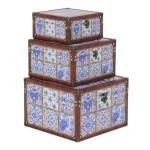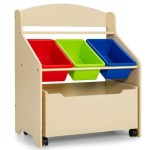Maximizing Kitchen Space With a Small Island Storage Facility
Kitchens, often considered the heart of the home, can present spatial challenges, particularly in smaller living spaces. The desire for a functional, aesthetically pleasing kitchen often clashes with the limitations of available square footage. One effective solution for addressing this conflict is the incorporation of a small kitchen island featuring integrated storage. A well-designed small island can significantly enhance both the efficiency and organization of a compact kitchen without overwhelming the area. Such a structure serves not only as a central workspace but also as a valuable repository for kitchen essentials, effectively maximizing every inch of available space.
The integration of storage into a small kitchen island is not merely an aesthetic consideration; it is a strategic design choice that addresses the practical needs of modern living. In a world where kitchen appliances and culinary tools continue to proliferate, finding dedicated storage space becomes paramount. A small island offering shelves, drawers, and specialized compartments can alleviate clutter, improve workflow, and transform a cramped kitchen into a more organized and enjoyable environment. The key lies in careful planning and a thoughtful understanding of the specific storage requirements of the household.
Choosing the Right Size and Configuration
The initial step in integrating a small island into a kitchen is determining the appropriate size and configuration. This decision should be guided by the kitchen's dimensions and the desired functionality of the island. Overcrowding the kitchen with an excessively large island will negate its intended benefits, creating an obstruction rather than a solution. Conversely, an island that is too small may fail to provide sufficient storage or workspace. Ideally, the island should allow for comfortable movement around it, with a minimum of 36 inches of clearance between the island and surrounding countertops or appliances. Consider the island’s length, width, and height in relation to the existing kitchen layout.
The configuration of the island should align with the user's cooking style and storage needs. A simple rectangular island with open shelving may suffice for storing frequently used pots and pans, while an island with drawers and cabinets can conceal smaller items, such as cutlery, utensils, and spice jars. For those who frequently bake, an island with a built-in cutting board and flour storage bin could be particularly useful. The configuration should also consider the island's proximity to other kitchen elements, such as the sink, stove, and refrigerator. A well-positioned island can seamlessly integrate with the existing workflow and improve overall efficiency.
Beyond its basic shape, consider the island's mobility. A stationary island offers stability and can be integrated with electrical outlets or plumbing, providing a permanent workspace and storage solution. A mobile island, on the other hand, offers flexibility and can be easily moved to accommodate changing needs. Mobile islands are often equipped with locking casters for stability and may feature foldable countertops or slide-out shelves to maximize functionality. The choice between a stationary and mobile island depends on the user's preferences and the constraints of the kitchen space.
Maximizing Storage Potential
The primary purpose of a kitchen island storage facility is, unsurprisingly, storage. To maximize its potential, one must consider the types of storage solutions that can be incorporated into the design. Deep drawers, for example, are ideal for storing pots, pans, and other bulky items. Adjustable shelves offer flexibility in accommodating items of varying sizes. Pull-out shelves can improve accessibility to items stored at the back of cabinets. Specialized compartments, such as knife blocks, spice racks, and wine racks, can further enhance organization.
Vertical storage is another important consideration. Tall, narrow cabinets can be used to store baking sheets, cutting boards, or even cleaning supplies. Hanging racks can be installed above the island to store pots, pans, or utensils, freeing up valuable countertop space. Pegboards can be used to organize tools and equipment, keeping them within easy reach. The key is to exploit every available inch of vertical space to maximize storage capacity.
Consider also the often-overlooked space beneath the countertop overhang. This area can be transformed into a storage nook by adding shelves or cabinets. A shallow cabinet beneath the overhang can be used to store cookbooks, serving dishes, or even a small microwave. A pull-out trash can or recycling bin can be concealed beneath the overhang, keeping these items out of sight and out of mind. The key is to think creatively and to identify unused spaces that can be repurposed for storage.
To further optimize the storage within the island, consider using storage containers and organizers. Clear plastic bins can be used to group similar items together, making it easier to find what you need. Shelf dividers can be used to prevent items from toppling over. Drawer organizers can be used to keep cutlery, utensils, and other small items neatly arranged. The use of storage containers and organizers can help to maximize space and improve accessibility within the island.
Another storage option is to build in specific appliance storage. Microwaves can be tucked into a designated space, freeing up counter space. Small beverage refrigerators are also a common addition to kitchen islands, allowing drinks to be easily accessible. A dedicated space for cookbooks or spice racks can also be built into the island, tailoring the storage to the user’s specific needs.
Enhancing Functionality and Aesthetics
Beyond storage, a small kitchen island can also enhance functionality by providing additional workspace. The countertop surface can be used for food preparation, serving, or even as a breakfast bar. A built-in cutting board can provide a dedicated space for chopping vegetables, fruits, and meats. A drop-leaf extension can be added to the island to provide extra workspace when needed.
The addition of electrical outlets to the island can further enhance its functionality. Outlets can be used to power small appliances, such as blenders, food processors, or stand mixers. A built-in USB charging station can be used to charge mobile devices. Electrical outlets can be discreetly integrated into the island's design, preserving its aesthetic appeal.
Plumbing can also be integrated into the island, allowing for the installation of a small sink. A sink can be used for washing vegetables, rinsing dishes, or filling pots with water. A prep sink on the island can be particularly useful in larger kitchens, as it allows multiple people to work in the kitchen simultaneously. Plumbing integration requires careful planning and coordination with a qualified plumber.
Aesthetics are also important. The island should complement the overall style of the kitchen. Consider the color, material, and hardware of the island. A contrasting color can make the island stand out, while a complementary color can help it blend in. Granite, marble, or quartz countertops can add a touch of elegance. Stylish hardware can enhance the island's visual appeal.
Lighting can also play a role in enhancing the island's functionality and aesthetics. Pendant lights can be hung above the island to provide task lighting. Under-cabinet lighting can illuminate the countertop surface. Recessed lighting can provide general illumination. The lighting should be both functional and visually appealing, enhancing the island's overall presence in the kitchen.
Integrating seating is another valuable function to consider. Bar stools or chairs can be placed around the island to create a casual dining area. This is particularly useful in smaller kitchens where there may not be enough space for a separate dining table. The seating should be comfortable and stylish, enhancing the island's overall appeal.
In summary, maximizing kitchen space with a small island storage facility hinges on a thoughtful approach to size, configuration, and functionality. By carefully considering these factors and prioritizing storage solutions, homeowners can transform cramped kitchens into organized, efficient, and aesthetically pleasing spaces.

35 Small Kitchen Island Ideas To Maximize Space

Multi Functional Kitchen Islands Maximizing Space And Function Solvers
20 Small Kitchen Island Ideas That Maximize Storage And Prep Space

The Power Of Kitchen Island Maximizing Your Space Bath Galleria

13 Small Kitchen Design Ideas Organization Tips Extra Space Storage

Small Kitchen Island Ideas That Transform Tiny Kitchens Into Functional Spaces Design

Top Kitchen Islands Designs With Seating And Storage

What Is The Minimum Kitchen Size To Have An Island

Beautiful Galley Kitchens How To Maximize Space And Style Decorcabinets Com

Maximize Space Genius Tiny House Kitchen Design Ideas You Need To See
Related Posts








